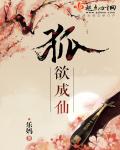一句一译的安徒生童话 第16章 红鞋 The Red Shoes (第1/5页)
光玩不行提示您:看后求收藏(350中文350zw.com),接着再看更方便。
《红鞋》,1845 年
The Red Shoes, 1845
---
《红鞋》是儿童文学经典中最令人不安的故事之一,人们从多种角度解读过这个故事,但总是会关注到被砍下来还在独自跳舞的双脚的恐怖之处。
\"The Red shoes\" is one of the most disturbing tales in the literary canon of childhood, and it has been read in multiple ways, but always with attention to the horrors of the chopped - off feet that dance on their own.
如今,安徒生故事中的卡伦的舞蹈,与其被解读为一种傲慢无礼的行为,不如说是一种创造力的表现。
Today, Karen’s dance in Andersen’s tale is read less as an act of insolent arrogance than as an expression of creativity.
对许多女权主义作家和评论家来说,这个故事已成为一种寓言,寓意着那些更倾向于创造性实现而非遵循传统社会角色的人所面临的暴力威胁。
The tale has become for many feminist writers and critics an allegory of the violence threatening those who prefer creative fulfillment to compliance with conventional social roles.
安妮・塞克斯顿的诗作《红鞋》表达了对穿红鞋的舞者因违抗社会规范、表示不顺从而走向自杀的担忧:
Anne Sexton’s poem \"The Red Shoes\" expresses anxiety about how dancers in red shoes turn suicidal because they defy social norms and signal insubordination:
“她们的所作所为会毁了她们自己。”
\"What they did would do them in\".
玛格丽特・阿特伍德小说《女占卜者》中的作家捕捉到了将艺术成就与个人满足相结合的不可能性,并借助安徒生的故事来呈现女性所面临的困境:
The writer in Margaret Atwood’s novel Lady Oracle captures the impossibility of combining artistic accomplishment with personal fulfillment and relies on Andersen’s tale to capture the dilemma facing women:
真正的红鞋,双脚因跳舞而受罚。
The real red shoes, the feet punished for dancing.
你可以跳舞,或者你可以拥有一个好男人的爱。
You could dance, or you could have the love of a good man.
但你害怕跳舞,因为你有一种莫名的恐惧,如果你跳舞,他们就会砍掉你的双脚,这样你就不能跳舞了……
But you were afraid to dance, because you had this unnatural fear that if you danced they’d cut your feet off so you wouldn’t be able to dance...
最后你克服了恐惧开始跳舞,然后他们砍掉了你的双脚。
Finally you overcame your fear and danced, and they cut your feet off.
那个好男人也离开了,因为你想要跳舞。
The good man went away too, because you wanted to dance.
红鞋的故事在欧洲口头叙事文化中广为人知,在那里它也被称为 “魔鬼的舞鞋” 和 “魔鬼的炽热之鞋”。
The tale of the red shoes is known to European oral storytelling cultures, where it also goes by the names “The Devil’s Dancing Shoes” and “The Red - Hot Shoes of the Devil.”
克拉丽莎・平可拉・埃斯蒂斯(Clarissa Pinkola Estés)在《与狼共舞的女人》(Women Who Run with the Wolves)中收录了她所谓的 “匈牙利 - 日耳曼” 版本。
Clarissa Pinkola Estés includes what she calls a “Magyar - Germanic” version in Women Who Run with the Wolves.
在那个版本里,红鞋在森林中跳舞,消失不见,而女孩成了跛子,“再也不想拥有红鞋了”。
There, the red shoes dance through the forest out of sight, and the girl remains a cripple, who “never, ever again wished for red shoes.”
---
从前有一个小女孩,长得非常漂亮、娇弱,但夏天她不得不光着脚跑来跑去,因为她太穷了;冬天她穿着很大的木鞋,这让她的小脚背变得通红,看起来很危险!
There was once a little girl who was very pretty and delicate, but in summer she was forced to run about with bare feet, she was so poor, and in winter wear very large wooden shoes, which made her little insteps quite red, and that looked so dangerous!
村子中间住着一位老鞋匠娘子;她坐在那里,尽她所能用旧的红布条缝出了一双小鞋;这双鞋很笨拙,但这是一番好意。
In the middle of the village lived old Dame Shoemaker; she sat and sewed together, as well as she could, a little pair of shoes out of old red strips of cloth; they were very clumsy, but it was a kind thought.
这双鞋是给小女孩的。
They were meant for the little girl.
小女孩名叫卡伦。
The little girl was called Karen.
就在她母亲下葬的那天,卡伦收到了红鞋,并第一次穿上了它们。
On the very day her mother was buried, Karen received the red shoes, and wore them for the first time.
这双鞋肯定不是用于丧服搭配的,但她没有别的鞋子了,于是她光着脚穿着这双鞋跟在简陋的草编棺材后面。
They were certainly not intended for mourning, but she had no others, and with stockingless feet she followed the poor straw coffin in them.
突然,一辆又大又旧的马车驶过来,里面坐着一位又大又老的女士:她看着小女孩,对她产生了怜悯之情,然后对牧师说:



